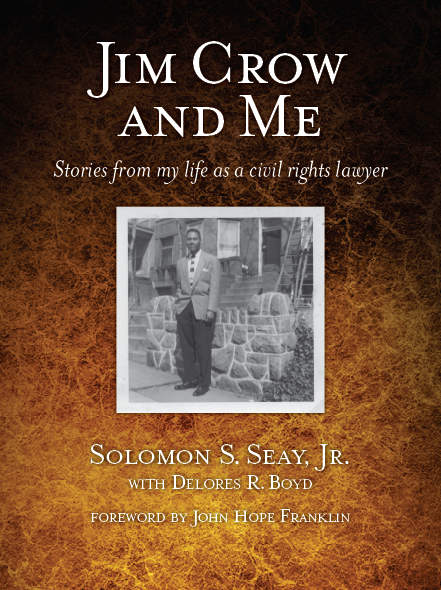Solomon Seay on post-racial America with Stetson Law Project
Thursday, July 7th, 2011 by Sam Robards
Renowned civil rights lawyer Solomon Seay Jr. talks with Stetson University law professor Bob Bickel about Seay’s personal and professional struggles for equality, including discussion of his well-received memoir Jim Crow and Me, in a new online documentary as a part of Stetson University College of Law’s Oral History Project (registration required to view videos).
As one of only three African American lawyers in Montgomery, AL, in the late 1950s, Seay braved the Ku Klux Klan, Jim Crow laws, and the state of Alabama’s entrenched racism in order to desegregate public schools and facilities, to protect Freedom Riders and voting rights activists, and to ensure equal justice under the law to African American citizens. During his legal career across the state of Alabama, Seay focused primarily on civil rights cases, including race-based and gender-based employment discrimination, access to public accommodations, and police brutality.
In the online video, Seay talks about the need for young lawyers, regardless of race, to have empathy and resist complacency when they see injustice:
That, really, is my biggest interest as it relates to Jim Crow and Me. That is getting something to our young folks, especially the young lawyers so that they will have some notion, at least, of where the black lawyer has come from. And a better understanding of where he has to go and, perhaps, a greater knowledge of how to get there.
Seay also discusses how he would receive help, albeit conditional help, from white lawyers during his first days in Montgomery:
When I first came to Montgomery to practice law in Alabama, there were two black lawyers here: Fred Gray, who was perhaps the best-known civil rights lawyer in the country, and Charlie Langford. But both of them had only been here a year or so. I started a solo practice, and, of course, there were a lot of things I just didn’t know about the practice in Alabama. And Fred and Charles didn’t know much more about Alabama practice than I at the time. And whenever I ran into a situation that was just foreign to me, I would stop and think about who in this area is an expert in this field and I’d give them a call … There was a never a single time that a white lawyer whom I called turned me down. Not one time, but, at the end of the conversations, there was always the caveat: “But now, nobody needs to know that I helped you with this.” But I was never turned down.
Finally, Seay tells Bickel about his discomfort with the notion of America as a “post-racial society”:
I was really taken by surprise by the inauguration of [President Barack] Obama … after the ceremony … I was shocked and dismayed at the number of folks, black and white, who said that the inauguration of Barack Obama was the culmination of the dream of Martin Luther King. And if we have the audacity to believe than, then we have problems … because that does not signify a post-race society. And even though [civil rights lawyers of the ’50s and ’60s] had gotten together and pretty much buried Jim Crow, bigotry, at that time, arose like the Phoenix from the ashes, and yet more sinister … and more subtle and more difficult … to attack … And even though [the civil rights lawyers] were successful in really doing away with all of the Jim Crow laws, we’ve not reached a post-race society, and … you still experience it everyday.
You can access all the videos at Stetson University College of Law’s Oral History Project.
Jim Crow and Me: Stories from My Life as a Civil Rights Lawyer is available from NewSouth Books, Amazon.com, or your favorite online or local bookseller.


